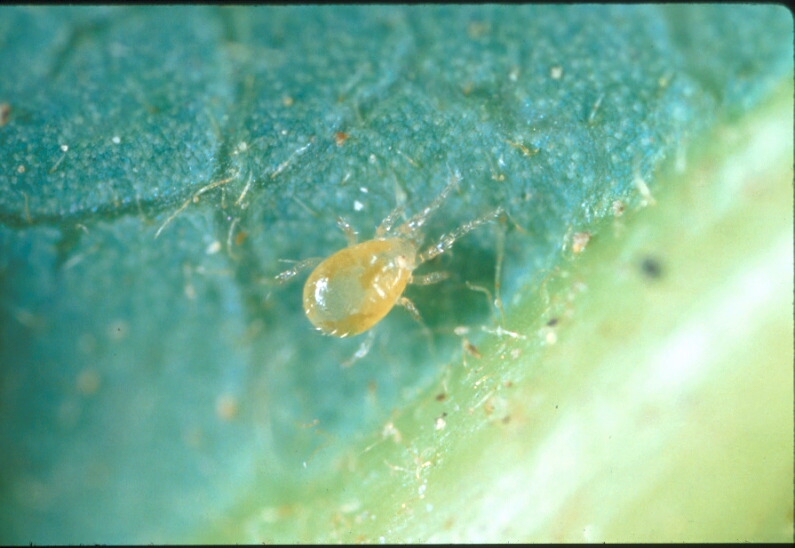PREDATORY MITES
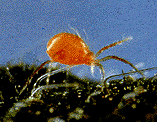
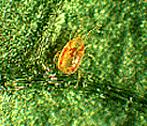
Predatory mites are valuable predators. They eat pest mites such as spider and citrus mites, and are sold commercially for use on house plants, in greenhouses, in fruit orchards and farms.
Adult mites are tiny, about half a millimeter in length (1/50 inch), and are virtually invisible to the naked eye. Mites are often smaller than the prey they eat. Predatory mites are beige to reddish tan in color and they resemble pest mites but are faster moving and have fewer hairs. They have tear-drop shaped bodies and 8 legs.
Mites are so tiny that they can get into places that pesticide sprays can not. They live near plants rich in pollen and are happiest where it is very humid.
Appearance
Mites are not insects; they are more closely related to spiders. Adults have
four pairs of legs. They also have two, rather than three, body parts. The
species best known to growers are the plant-feeding spider mites. There are,
however, many species of beneficial predatory mites, several of which are mass
reared commercially.
Predatory mites are usually teardrop-shaped, long legged when compared to spider mites, and often orange-red, tan, or brown. They move quickly through and around spider mite colonies in search of prey and, unlike spider mites, can move backwards as well as forwards. Eggs are usually oval-shaped and a little larger than the spherical eggs of spider mites. Predatory mite nymphs resemble small adults.
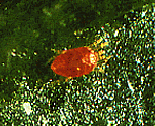 |
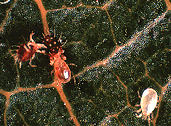 |
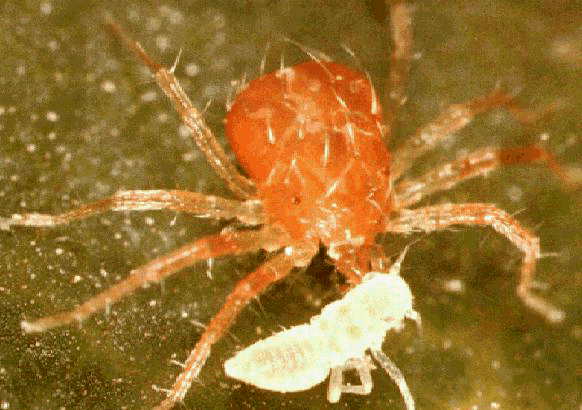
|
|
Habitat (Crops)
Predatory mites live in fields and orchards, or anywhere they can find food
- greenhouse crops,
orchards, small fruit plantings.
Pests Attacked
Different species of predatory mites attack spider mite adults, nymphs,
larvae, and eggs; thrips, and fungus gnat eggs and larvae.
Many species may also prey on other small insects and insect eggs.
Life Cycle
The time from egg to adult can range from a few days to weeks, depending on
the temperature, humidity, and species. The commercially available species often
have high rates of reproduction and short generation times, and are able to
match the life cycle of their prey reasonably well. Most commercially available
species do not live over winter in cold climates.
Relative Effectiveness
Predatory mites can seek out prey in places that may be inaccessible to chemical
sprays. These beneficial mites are used against spider mites and several species
of thrips by greenhouse flower, ornamental, and vegetable producers in Canada
and Europe, and by some United States growers. Predatory mites are particularly
successful in greenhouses partly because of the high degree of control that the
grower has over the environment. However, several predatory species also have
been used successfully to suppress spider mites in United States apple, citrus,
and avocado orchards and also in field-grown strawberries and raspberries in
California.
Some species of predatory mites are among the few biological control agents that will starve if they cannot locate any food. Once their food is gone, predatory mite populations will also die. The ability of predatory mites to seek out prey can be hindered by plants with hairy stems or leaves.
